The following is a guest post from Jeff Sauer, Vice President at Three Deep Marketing, a Google Analytics Certified Partner. Jeff recently started a website dedicated to advancing digital marketing knowledge called Jeffalytics.
Lead generators know that the combination of Google AdWords + Google Analytics is a winning combination for generating an inflow of high quality leads. They are like peanut butter and jelly, Forrest Gump and Jennay, Mel Gibson and Danny Glover.
Lead generators know that the combination of Google AdWords + Google Analytics is a winning combination for generating an inflow of high quality leads. They are like peanut butter and jelly, Forrest Gump and Jennay, Mel Gibson and Danny Glover.
What many users may not realize is that there are many features that they can unlock in Google Analytics to make their lead generation campaigns perform better while becoming more transparent and accountable. What follows is a series of tips, trips and hacks that you can use to make your lead generation campaigns work even better. I have broken this down into three sections: Configuration, Integration, Analysis.
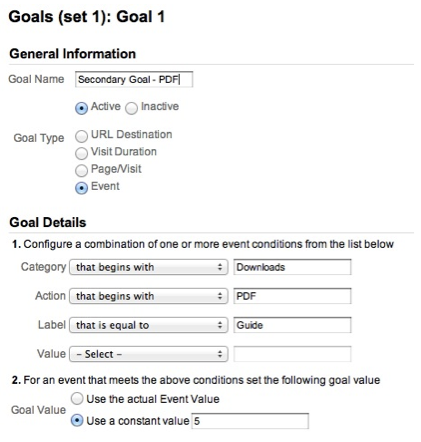
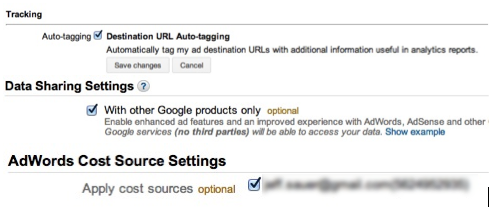
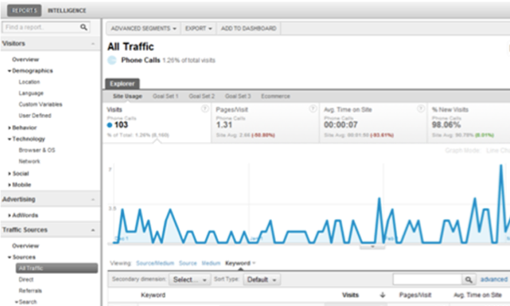

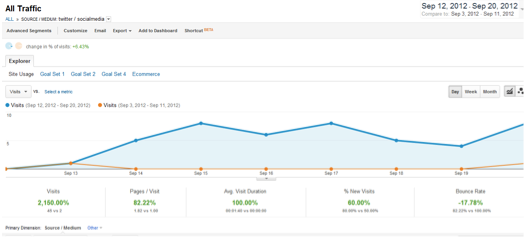
Fortunately, people smarter than myself have found a way to solve this problem, and this solution for CRM integration by Justin Cutroni has become my gold standard for how to pull information out of Google Analytics cookies and attach to the lead record you enter into your CRM system.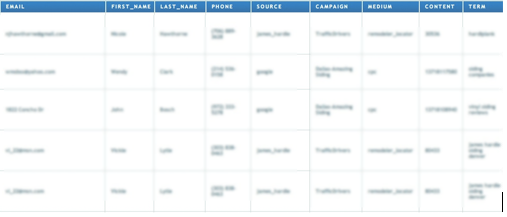
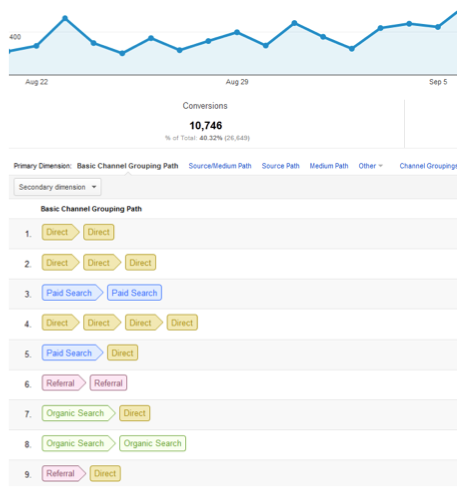
Configuring Analytics for Lead Generation Websites
Set Up Goals in Google Analytics
Yes, this is a very elementary step in your Google Analytics evolution. You surely configured goals on your site years ago, right? Well, let's make sure you didn't miss anything:
- Navigate to the URL of your 'thank you' page shown after a lead is generated. Make note of the URL of this page.
- Make your best guess as to the value of each lead that you generate (note: you can have multiple lead values, and multiple goals).
- Configure your goals in Google Analytics, assigning the proper goal value for each lead you generate.
- Unlock a new world of reports in Google Analytics and see the real value of your lead generation efforts.

Bonus tip: There's absolutely nothing wrong with measuring micro conversions on your lead generation site. Have a PDF that someone can download freely? Set a goal and assign it a modest value (even if it's $5, the impact can be huge). Have a 2 minute video? Give it a value as well, even if it's just a dollar or two. Both PDF downloads and video plays can be tracked using GA event tracking - and you can configure goals around events.
Track Visitors Across Domains
Many lead generation sites use third party forms and services to capture leads, whether as part of an affiliate program or a third party CRM site. While this acts as an excellent conduit to lead delivery, it can often result in missing data in Google Analytics reports. Depending on the services used, there is still a way to retain this data in Google Analytics by tracking your visitors across domains. Here's how this is done:
- On your primary website, add the _gaq.push(['_setDomainName', 'PRIMARY DOMAIN']); and _gaq.push(['_setAllowLinker', true]); methods.
- When linking to your external domain, add an onclick element as follows: onclick="_gaq.push(['_link', 'THE LINK']); where THE LINK is your external page
- Add the GA Tracking Code to your third party hosted page, being sure to use the _gaq.push(['_setDomainName', 'PRIMARY DOMAIN']); and _gaq.push(['_setAllowLinker', true]); methods on this page as well. It is important to make sure you are setting your primary domain here as well.
- Configure your goals to match the thank you page URL on the third party domain (or on your own site if you can redirect visitors back to your domain)
By linking visits across domains, your reports will accurately attribute visitors and goals to their proper source and medium instead of treating them as direct visitors.
Integrate with Google AdWords Both Ways
Most of us know to share data between AdWords and Analytics and enable the Google AdWords report in Analytics, but many times this is not done properly. In addition, not enough marketers seem to take advantage of Google Analytics' ability to push conversion data back into AdWords. You really have nothing to lose when you integrate these two Google products both ways, but you have many insights to gain. Start off by making sure you configure these integrations properly:
- Share Google AdWords data with Google Analytics. This may seem easy, but is often incomplete when implemented. Make sure that you 1) Turn on Auto Tagging in AdWords, 2) Enable Data Sharing and 3) Apply Cost Data into Google Analytics
- Configure your goals in Google Analytics as outlined above
- As soon as data starts to collect for these goals, you will see the option in AdWords to import your goals from Google Analytics
- Enjoy consistent conversion data between both products and ensure that leads are being properly attributed
Using your goals in Google Analytics for your Google AdWords campaigns can come in handy when you don't have the ability to add a traditional JavaScript based conversion code onto your thank you page. In addition, importing goals from Google Analytics allows you to track some of the advanced conversions mentioned below in Google AdWords. The result? Better analysis capabilities, more advanced conversion rate optimization strategy and more credit for the leads you generate!
Integrating Analytics into Lead Generation Efforts
Phone Call Tracking
One thing that marketers may not realize is that for many industries, the majority of leads will come in through the phone instead of through a web form. Google AdWords understands this and now offers a robust system for tracking phone leads generated by AdWords. But how do you properly track and attribute phone calls generated from your site to a particular traffic source? You integrate Google Analytics with your call tracking provider.

This sounds complicated, but it really is not too bad. In fact, many phone tracking vendors offer a Google Analytics integration option as part of their service. For example, this works well with products like Marchex Voicestar and Mongoose Metrics among others.
Here are the basics of how this process works:
- Sign up with a phone call tracking service, create tracking numbers and appropriate campaigns
- Place tracking phone numbers on your website
- Specify a post-back URL to be visited when a successful phone call occurs
- Your phone tracking system will send a visit to the post back URL, complete with all Google Analytics cookie values for the visitor who saw that exact tracking number on your lead generation site
Please note that if you drive a lot of traffic to your website, it can take a lot of phone numbers and extensions to fully attribute phone calls to users. As such, you may want to start implementing this method for a small segment of your traffic and then building up to all visitors when this data proves useful.
Also note that even if you don't link calls back to Google Analytics, phone call tracking is still an imperative part of any lead generation campaign, because it's common for 30-70% of the leads you generate to come from the phone in certain industries.
Offline Marketing
Believe it or not, in many industries leads are still generated offline. Examples include trade shows, neighborhood canvassing (going door to door promoting a product or service), print and television advertising. These are activities that companies have been doing for years, but the problem that they run into when using these mediums to drive traffic to their website is that they don't register the traffic source properly in Google Analytics. The result: many direct visitors without proper attribution.

How do we fix this? By following this simple process:
- Create a vanity URL that is unique to your campaign (can be a sub folder or new domain)
- Create a tracking URL for your website using the Google Analytics URL Builder
- 301 redirect your vanity URL to the tracking URL (this preserves your campaign attributes)
- Learn about how each traffic source performed by viewing your favorite reports in Google Analytics and paying attention to the source/medium/campaign
Now you can put your offline and online leads on a level playing field and compare the effectiveness of both side by side.
CRM Integration
For companies that are generating several leads a day, a Customer Relationship Management (CRM) system becomes imperative for keeping up with the leads coming in the door. Unfortunately, most CRM implementations are not integrated fully with the website and useful data is not shared between the two systems. This can create friction between sales and marketing, while making it nearly impossible to close the loop on what lead generation efforts are working the best.
Fortunately, people smarter than myself have found a way to solve this problem, and this solution for CRM integration by Justin Cutroni has become my gold standard for how to pull information out of Google Analytics cookies and attach to the lead record you enter into your CRM system.

While Justin's post goes into great detail, the basic premise is this:
- A visitor comes to your website and has source/medium/campaign/keyword information assigned to them in their Google Analytics cookie
- This information is accessible to your website by pulling cookie values out of Google Analytics using JavaScript
- Once this information is pulled out, you enter the values into hidden form fields underneath where your lead enters their contact information
- The vital information (source/medium/campaign/keyword term) is passed into your CRM system alongside the lead record
- Your sales team can now have deeper understanding of what type of traffic generates the best leads, all the way down to a keyword level
- You can use this information to refine your marketing efforts and campaigns to focus on your top performers
Sharing information between your website and your CRM system is an imperative step for making your marketing data actionable to the rest of the business. Without integrating, decisions are made based on faith and HIPPOs, instead of actionable data. As a note, with the advent of Universal Analytics this is likely to get even easier.
Analyze the Results and Make Your Site Even Better
How you analyze your site is a very personal thing, and your mileage may vary, so there isn't a magic bullet to ongoing success with your lead generation programs.
With that said, there are several reports that can be extremely useful in Google Analytics for lead generation campaigns. I would start by paying attention to the following:
- Use an advanced segment of paid search traffic and then navigate to the Conversions > Goals report. Compare the goal values you created recently with a similar time period in the past. Are your results improving?
- Navigate to the Multi Channel Funnels report and either use standard or custom channels. What is the most common first click channel? Are you giving it enough credit in your reporting?

- Compare direct traffic before and after implementing the integrations suggested above. Do you start to see more activity with proper attribution? Are you more confident analyzing with less of a grey area?
- Have you been receiving all of the credit you deserve for leads you generate over the phone?
- When a salesperson tells you that the leads you generate "suck" are you able to match their lead close rate to the source/medium/keyword that generated the lead?
- Instead of presenting raw lead numbers in a vacuum are you starting to factor in appointments issued, quotes given and sales made? Can you calculate the true cost of sale from keyword to purchase?
When configured properly, you can use Google Analytics and residual data from GA to perform some in depth closed loop analysis on how your lead generation campaigns are performing. Savvy lead generation experts have figured out how to deliver maximum value to their clients and constituents using the capabilities built into Google Analytics. Now it's your turn.
There you have it, the three pillars to getting the most out of Google Analytics for your lead generation website. Have any cool integrations yourself? Let's talk in the comments below.





